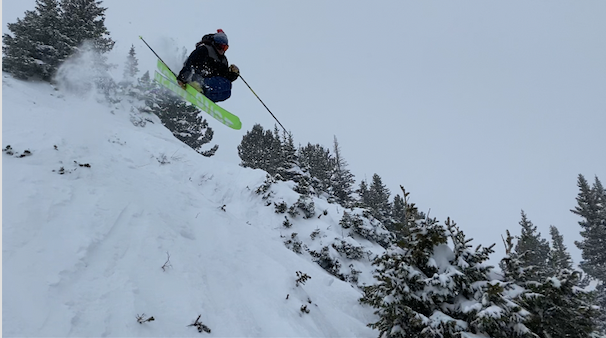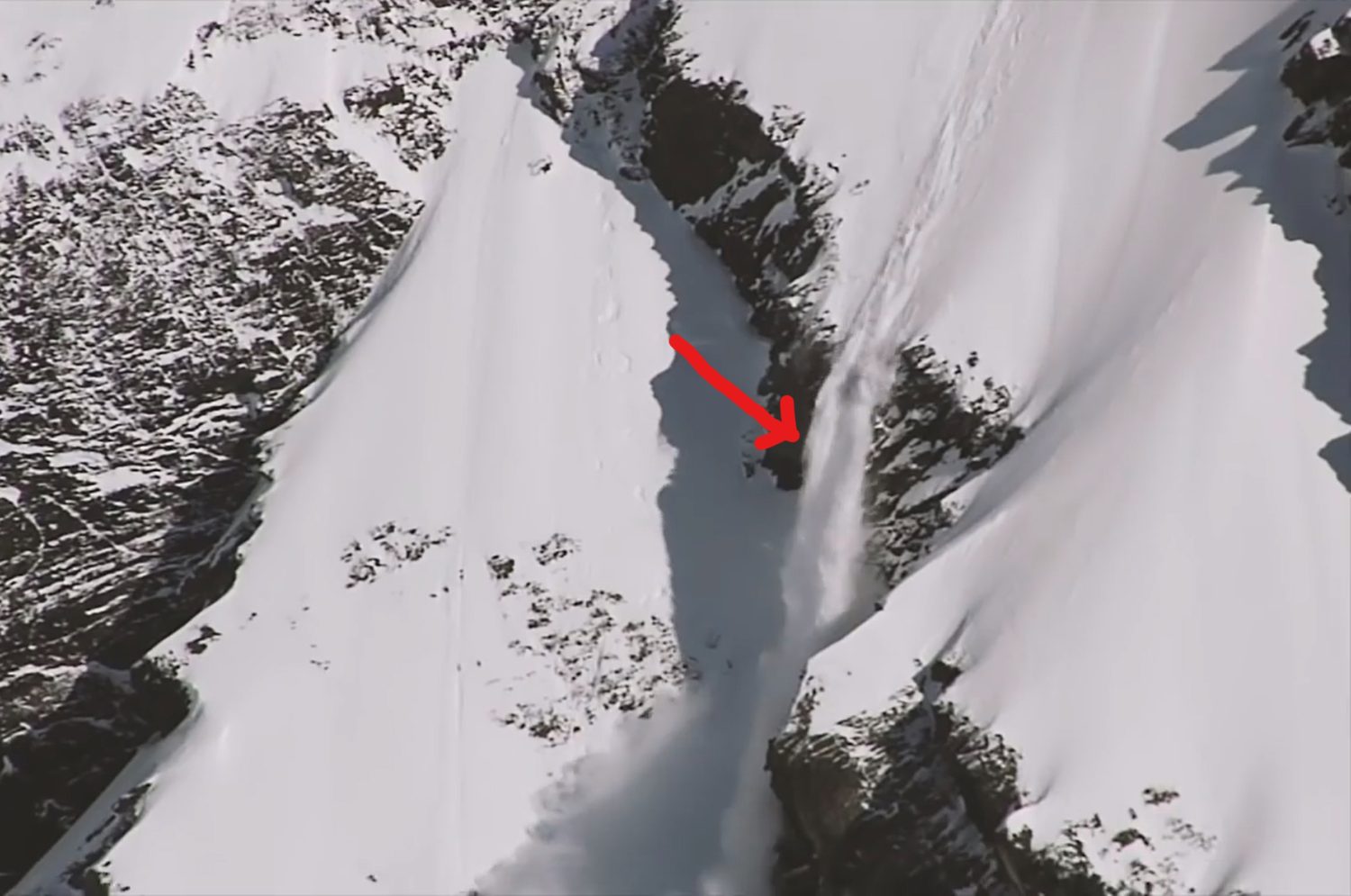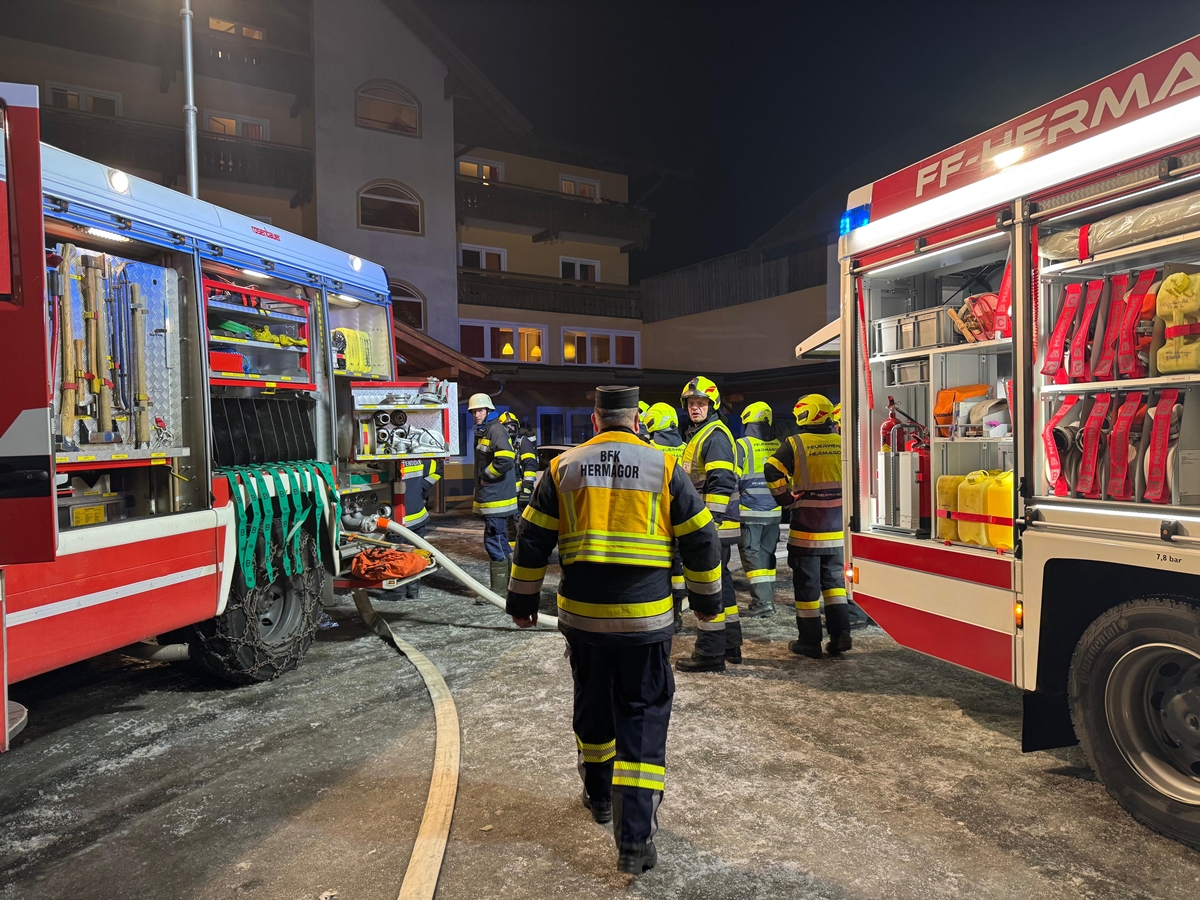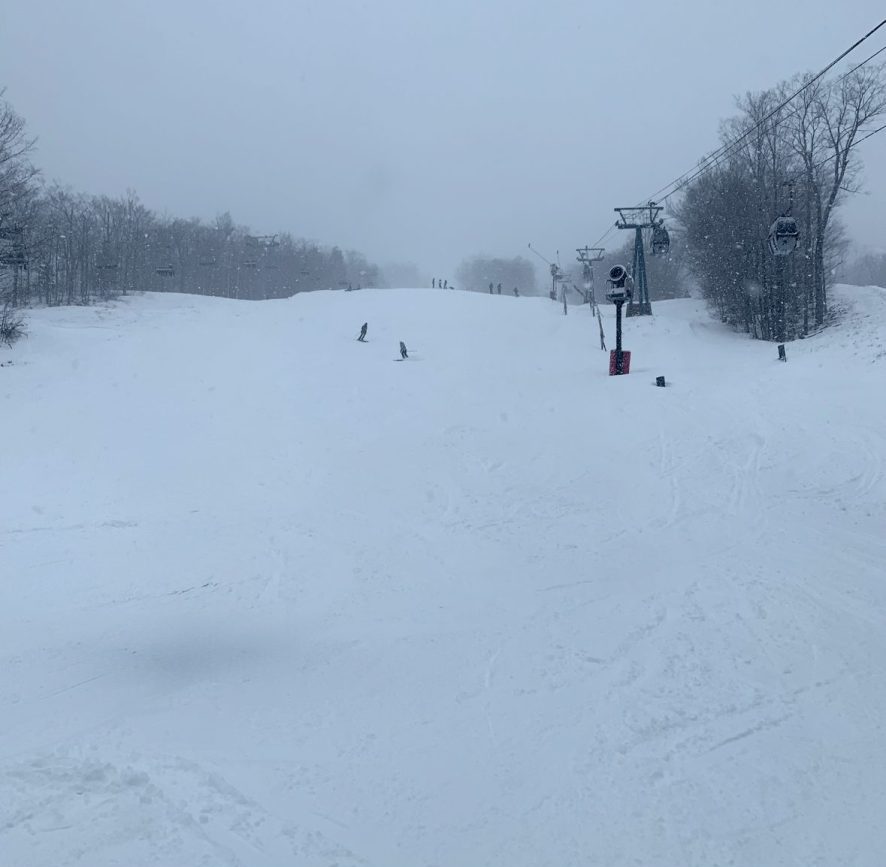
East Coast skiing or West Coast skiing? It’s a common question asked by many skiers, from beginners to experts. Having grown up skiing on the East Coast and been fortunate enough to have taken multiple trips out west, I have firsthand knowledge and experience in each of these categories. Skiing is such a fantastic sport with hundreds of mountains in America alone, but is one coast better than the other?
Terrain
From wide-open bowls in Colorado, California, and Utah, to tight glades in Vermont and New Hampshire, the terrain vastly ranges from coast to coast. Many resorts out west have large bowls, which are not found on the East Coast. Additionally, the sheer degree of steepness from resorts such as Alta in Utah and Crested Butte in Colorado is no match for those found in Vermont, New Hampshire, and Maine.
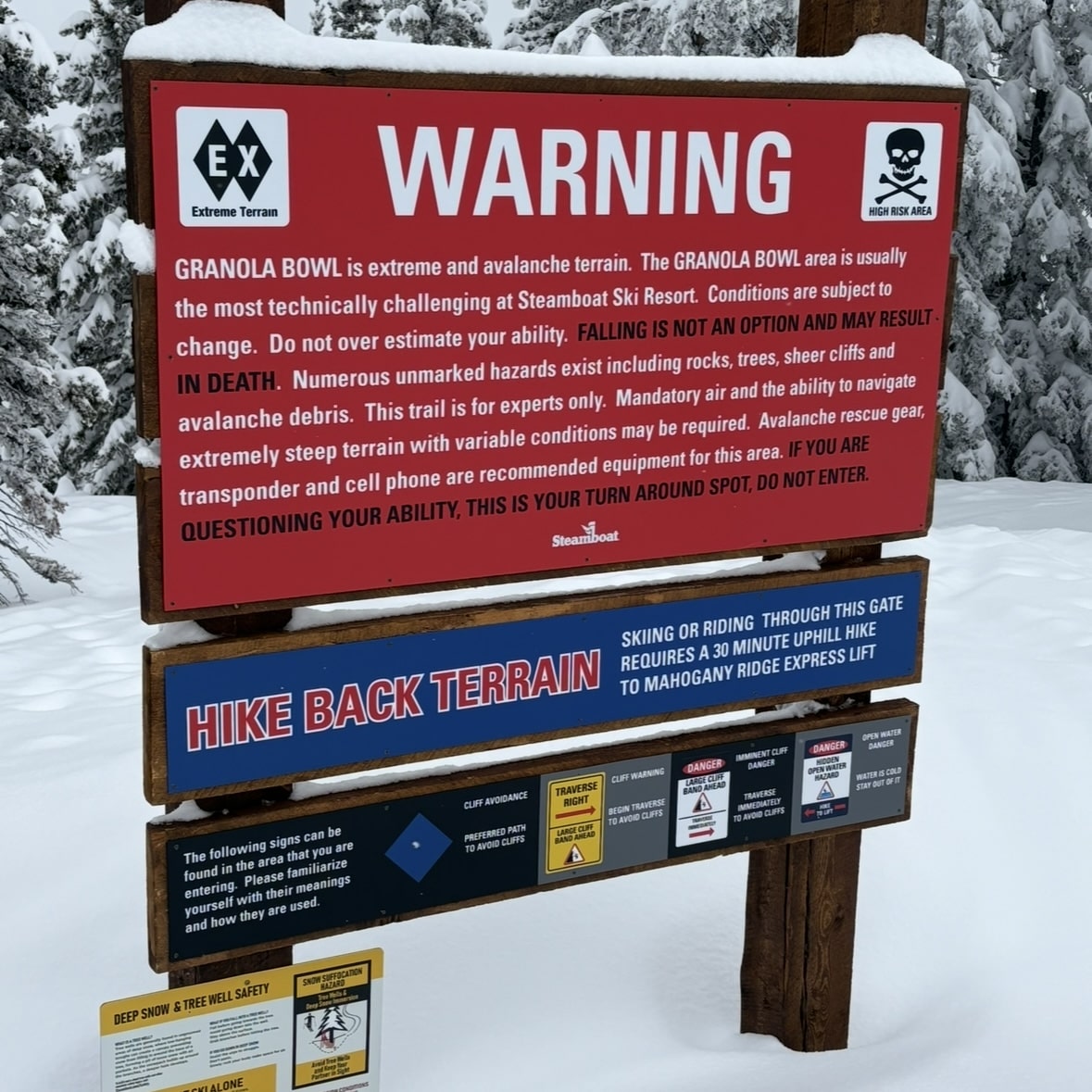
On the West Coast, there are many exposed, above-treeline ridges, posing a dangerous threat of avalanches, one that is very uncommon on the East Coast (there is only one mountain on the East Coast with above-treeline skiing: Sugarloaf in Maine).
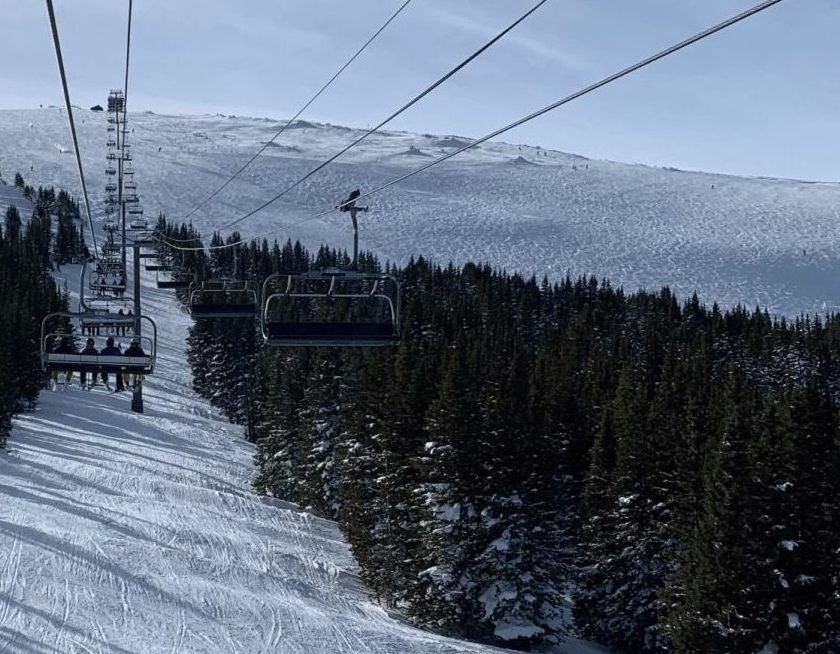
In contrast to the East Coast, where many of the steepest sections of the mountains are either out-of-bounds or traverses away, on the West Coast, some of the steepest runs you can get to are in a matter of seconds off the lift. In addition, it is normal for cliffs ranging from small to very large to be adjacent to the lifts on the West Coast, but they are hard to find on the East Coast.
Lifts
On the East Coast, you will find old, slow, stereotypical old-school chairlifts. That is not to say that there are no high-speed chairlifts, however. Many mountains on the East Coast offer a variety of slow, fixed-grip, and high-speed detachable chairlifts. One mountain, Mad River Glen, is renowned for its slow, single-person chairlift, which adds to its character and charm, making it a beloved part of Vermont that many people love and find truly special on the East Coast. In contrast, it is common for mountains on the West Coast to have somewhat more modern, high-speed lifts as the skiing there is much larger, generating more revenue, and the mountains are much bigger and in need of fast chairlifts that can climb large verticals in a short period of time.
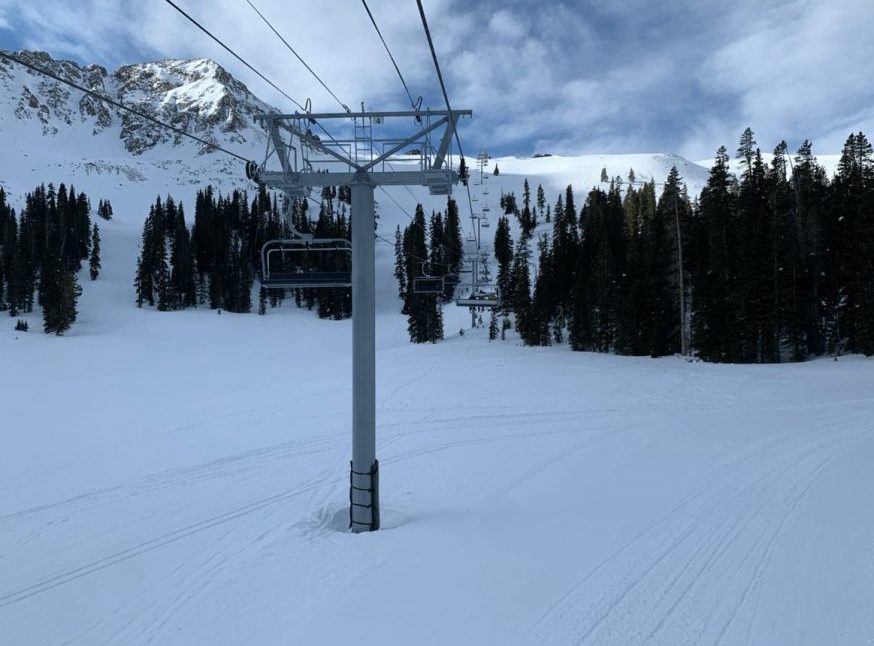
Snow Quality and Quantity
Although it is widely thought that the West Coast has ‘better’ and more snow, there are definitely a handful of resorts on the East Coast that are less talked about when it comes to snow quality and quantity. To begin with, a significant factor contributing to the increased snowfall at many West Coast resorts is altitude and elevation. The highest-elevation resort on the West Coast is no match for the highest-elevation on the East Coast, at almost three times the elevation. Based on its top lift-served elevation, Silverton Mountain of Colorado wins it for the West Coast, with an elevation of 13,487 feet, while Whiteface Mountain of New York, with an elevation of 4,867 feet, wins it for the East Coast.
As for total snow quantity, according to bestsnow.net, Jay Peak of Vermont averages the most snowfall of any mountain on the East Coast, with an average of 320”, however, that was shattered this past ski season with 475”, breaking into the top-10 highest snowfall mountains in all of America this past season. Mt.Baker of Washington has the highest average snowfall on the West Coast, at 641″ per year, according to bestsnow.net. Steamboat Resort makes its claim to fame with its famous ‘Champagne Powder,’ which is largely due to the low moisture levels, creating light, fluffy, and dry snow, which can make even the smallest of storms feel big.
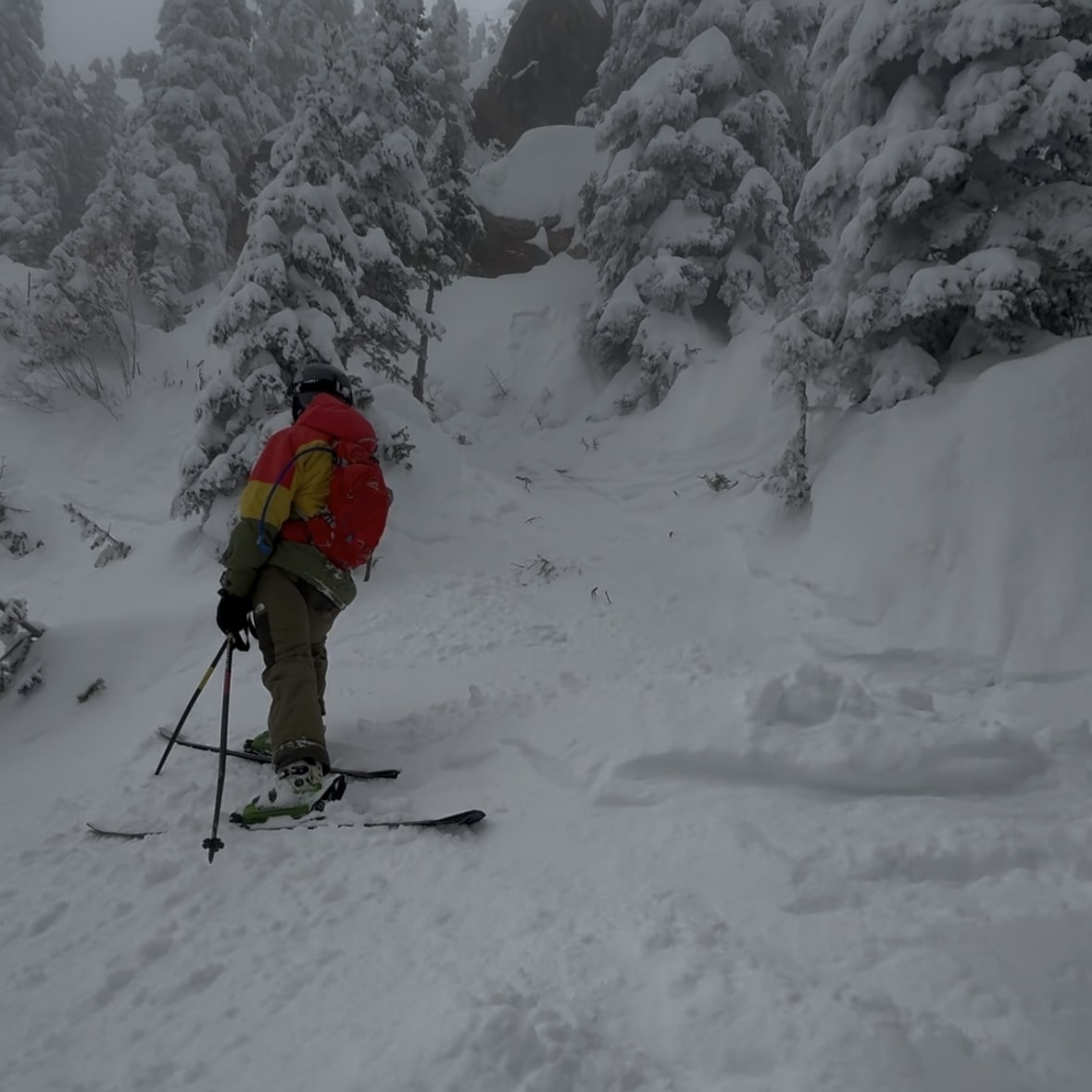
On the East Coast, naturally, the snow will settle into icier snow, rather than the light, fluffy powder found on the West Coast. This is due to the mountains being closer to the ocean, where moisture levels are higher, and the lower elevation results in lower-quality snow. Additionally, freeze-thaw cycles are common during the later months of the season. During the day, the mountain is blasted by the sun, creating slushy snow, and at night, temperatures drop below freezing, resulting in poor snow conditions for skiing early the next day. These cycles can last for anywhere from one day, all the way up to weeks during extreme cycles. However, this is not to undermine that when there are powder storms, the East Coast is an amazing place to be.
Attached below are bar graphs, showing the top-8 snowiest ski resorts on both the East and West Coasts, in inches (data according to bestsnow.net). Disclaimer: Alyeska, AK, was not included in the West Coast count as it is not located in the lower 48 states.
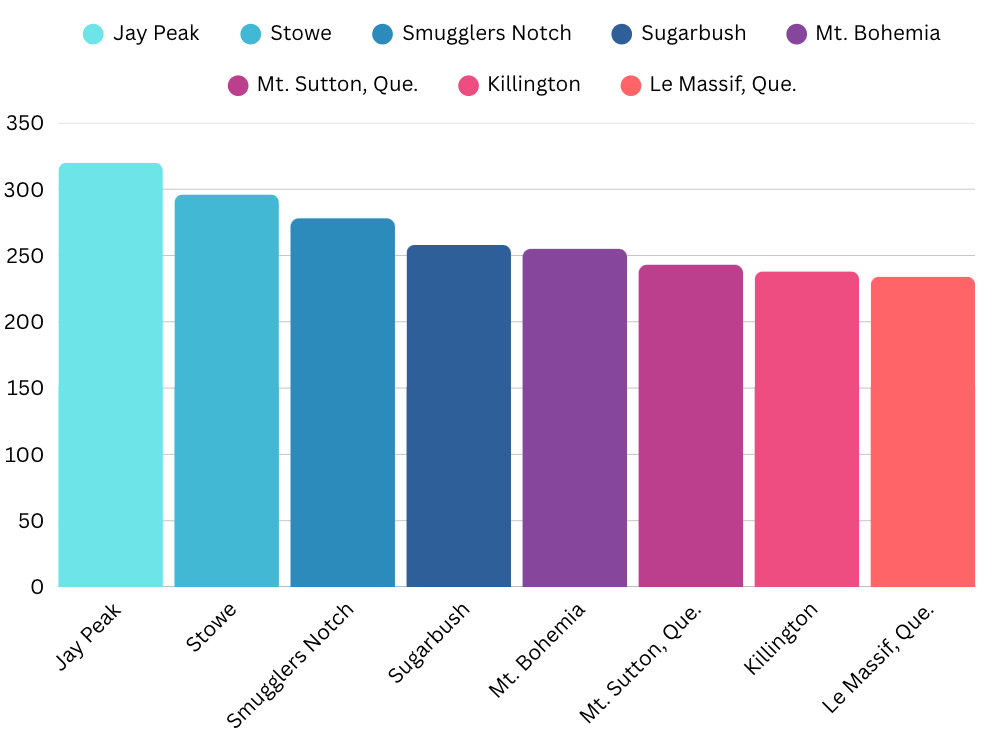
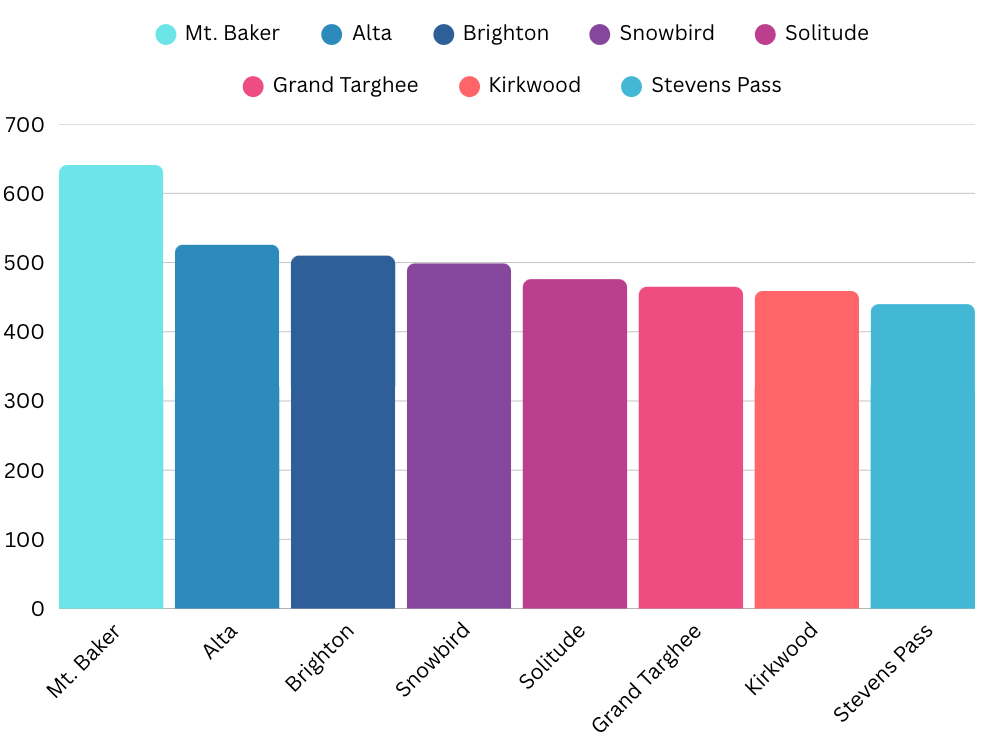
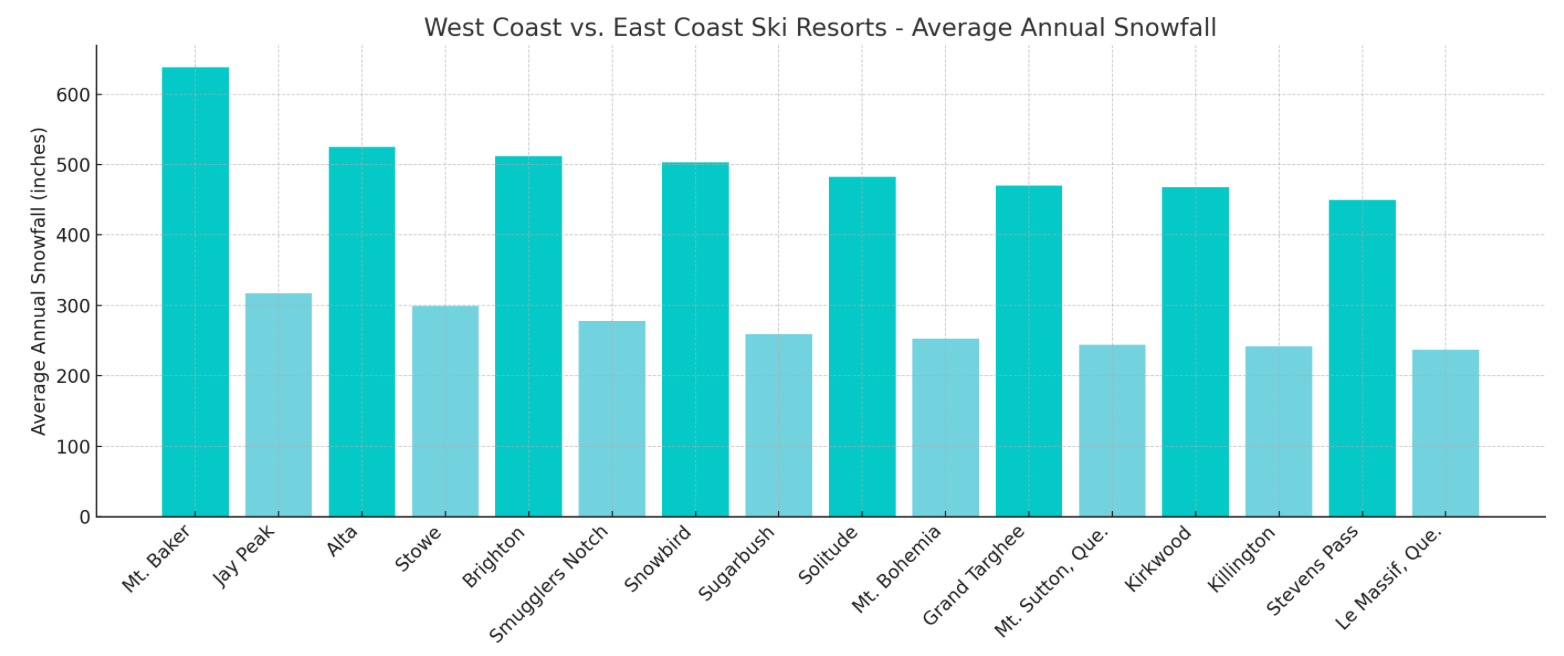
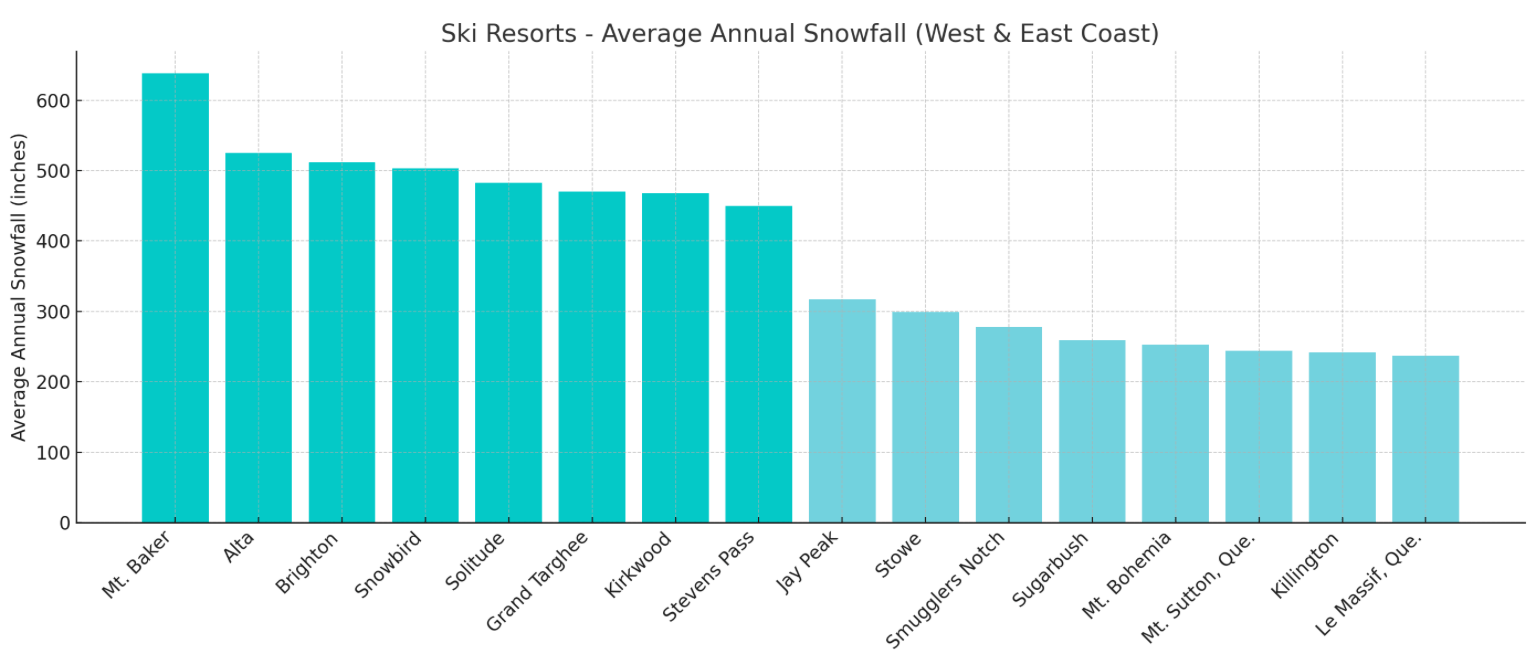
Size
There is a large difference between the East and West coasts in size. The West Coast has significantly larger mountains, larger vertical drops, higher elevation, and more skiable acreage than the East Coast. Many mountains on the West Coast are between 7,000 feet and 13,000 feet in elevation, whereas most on the East Coast are between 2,000 feet and 4,000 feet. Many West Coast resorts have large vertical drops, ranging from 2,500 feet to 3,500 feet, and the East Coast has a vertical drop of roughly 500 feet to 2,500 feet, with outliers such as Killington and Whiteface. The raw size of the mountains on the West Coast offers more versatile terrain in comparison to the East Coast. The largest ski resort by skiable acres in America is Park City, with 7,300 skiable acres.
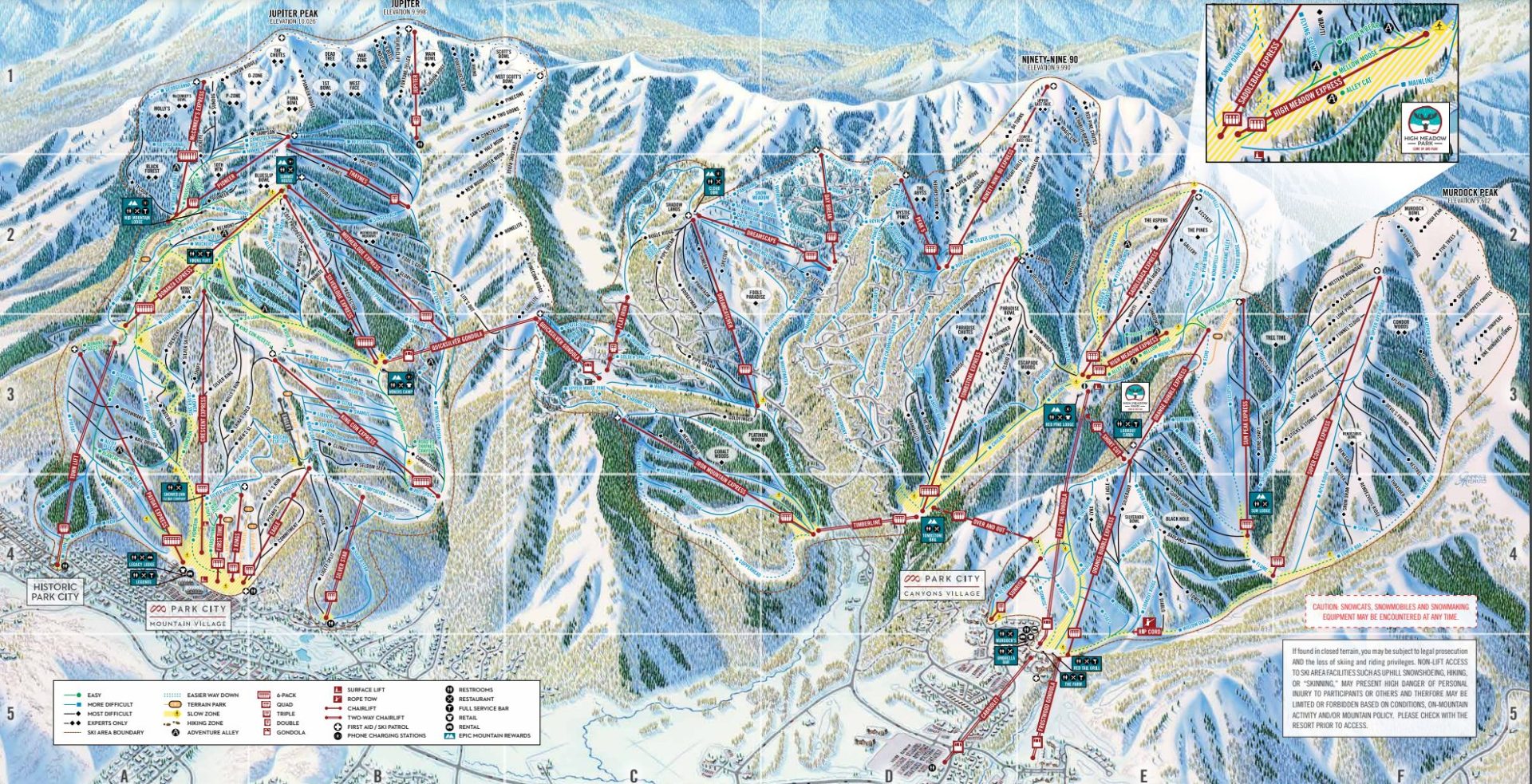
On the East Coast, the largest ski resort by skiable acres is Killington, nicknamed ‘the Beast of the East,’ with 1,509 skiable acres. Only about 21% of the size of Park City.
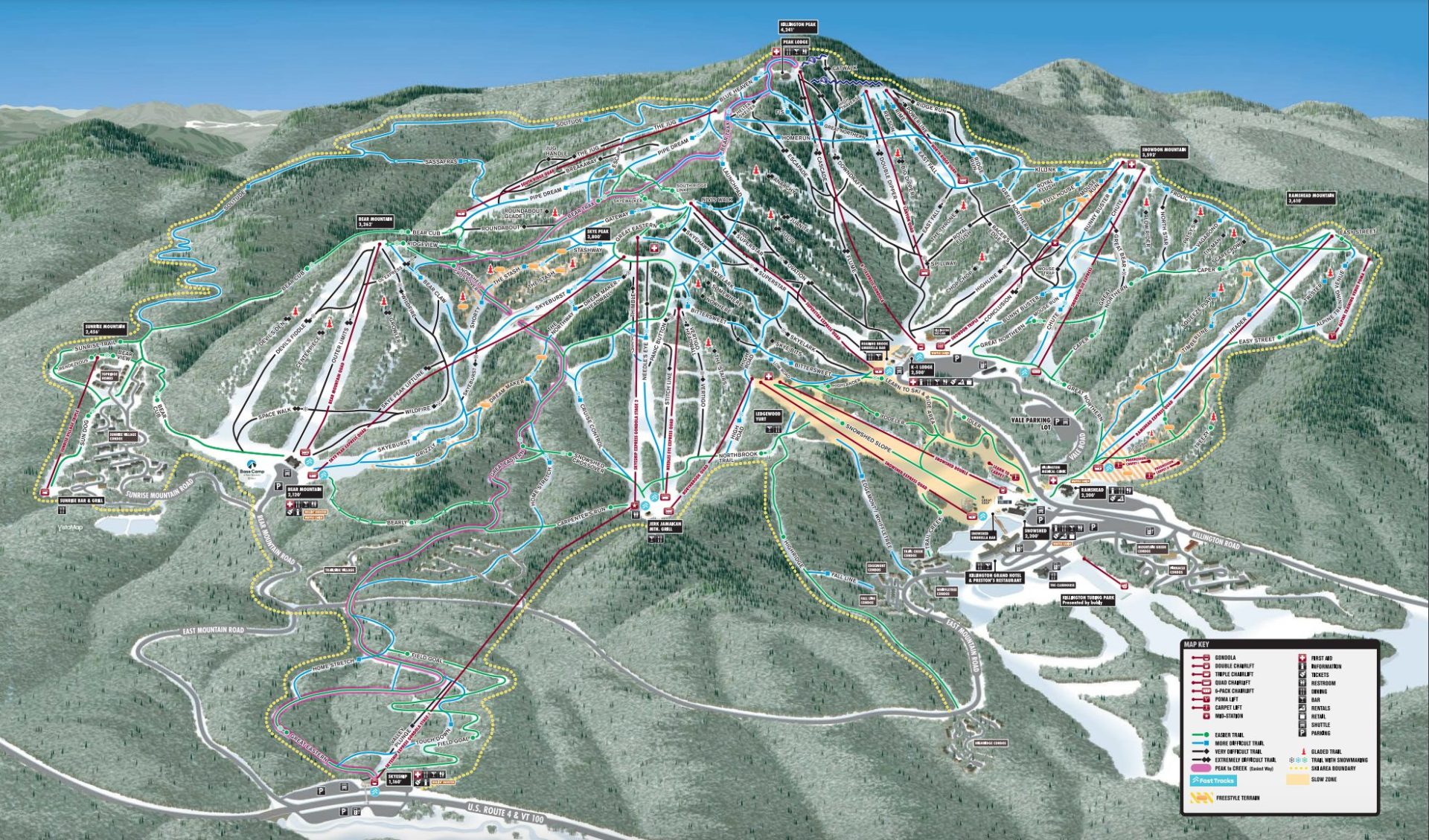
Nightlife
Whether you want a rustic dining experience on the East Coast or a party scene on the West Coast, each resort offers something for everyone. On the West Coast, many resorts have large villages and even cities that are a minute’s drive from the base of the mountain. Conversely, on the East Coast, with the exception of a few resorts, such as Stowe, many mountains lack large villages and nearby large towns. For example, Sugarbush, Vermont, has no real village or large town, yet there is no shortage of restaurants and hole-in-the-wall social places. They are just spread out, with no real centralized location. Mountains such as Steamboat and Park City have cities surrounding them, with a minute’s drive from the base of the mountain offering hundreds of restaurants, clubs, theaters, arcades, etc.
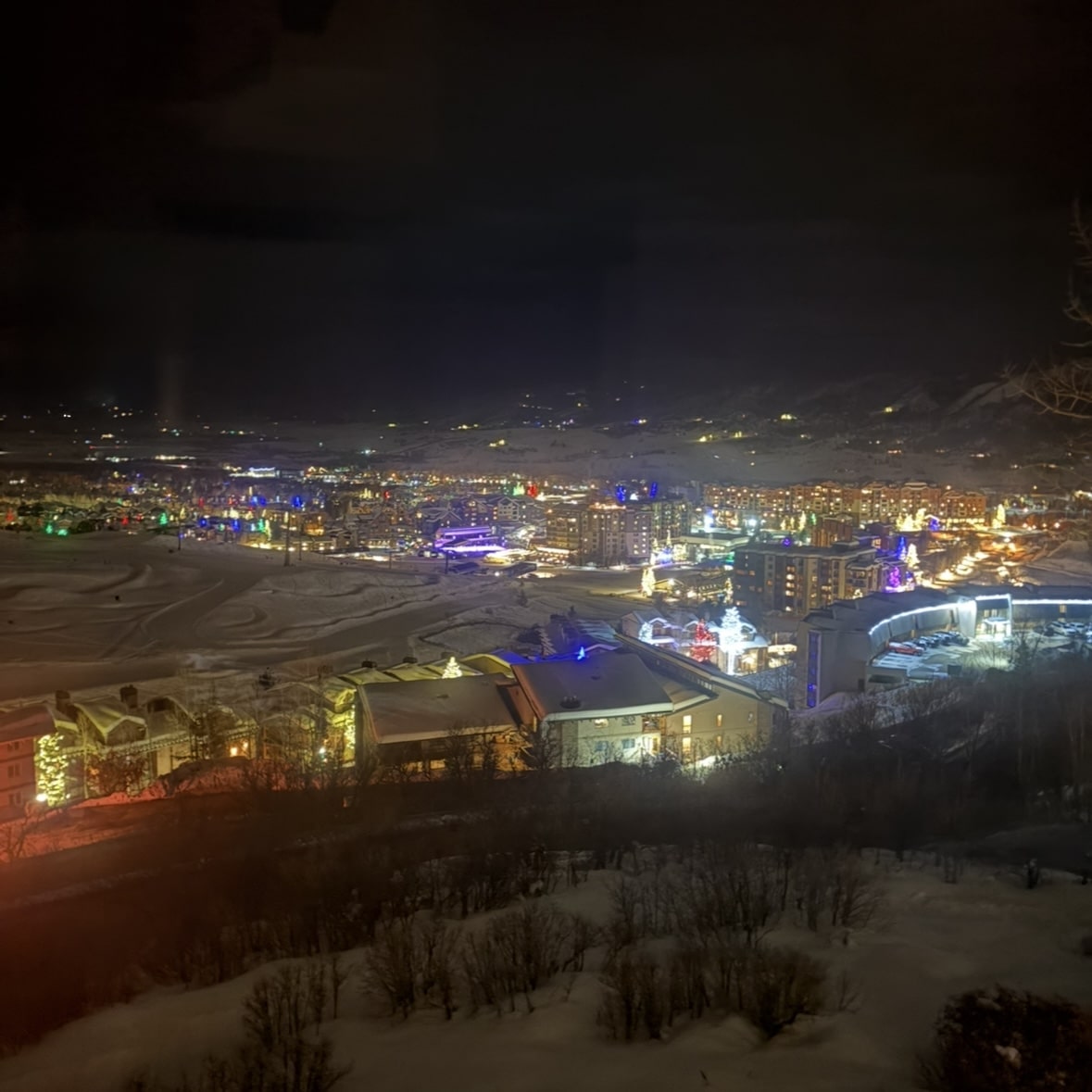
Similarly, Copper Mountain in Colorado and Palisade Tahoe in California, rather than having large cities, feature large villages at the base of the mountains that offer dining, housing, and activities. Loon Mountain in New Hampshire and Killington Mountain in Vermont are arguably the two mountains on the East Coast for nightlife. As for Loon, on Main St, there are tons of choices from casual dining at The Common Man and Black Mtn. Burger Co., to the cozy Gypsy Cafe, and even Thai food at the Thai 9, there is no shortage of restaurants. On Killington Road, there are tons of restaurants, from JAX Food & Games and Casey’s Caboose to nightclubs and live music; there is always something to do.
Ski lodges
One seemingly small difference between the two coasts, ski lodges, is rather not so small. On the East Coast, it is common for the lodges to be somewhat dated, and traditionally rustic and charming, with some outliers. One large difference is that on the East Coast, it is common for people to boot up inside the lodges, while on the West Coast, it is more common to get ready by your car in the parking lot. The lodges on the West Coast are often more modern, bigger, and have a wider variety of food options.
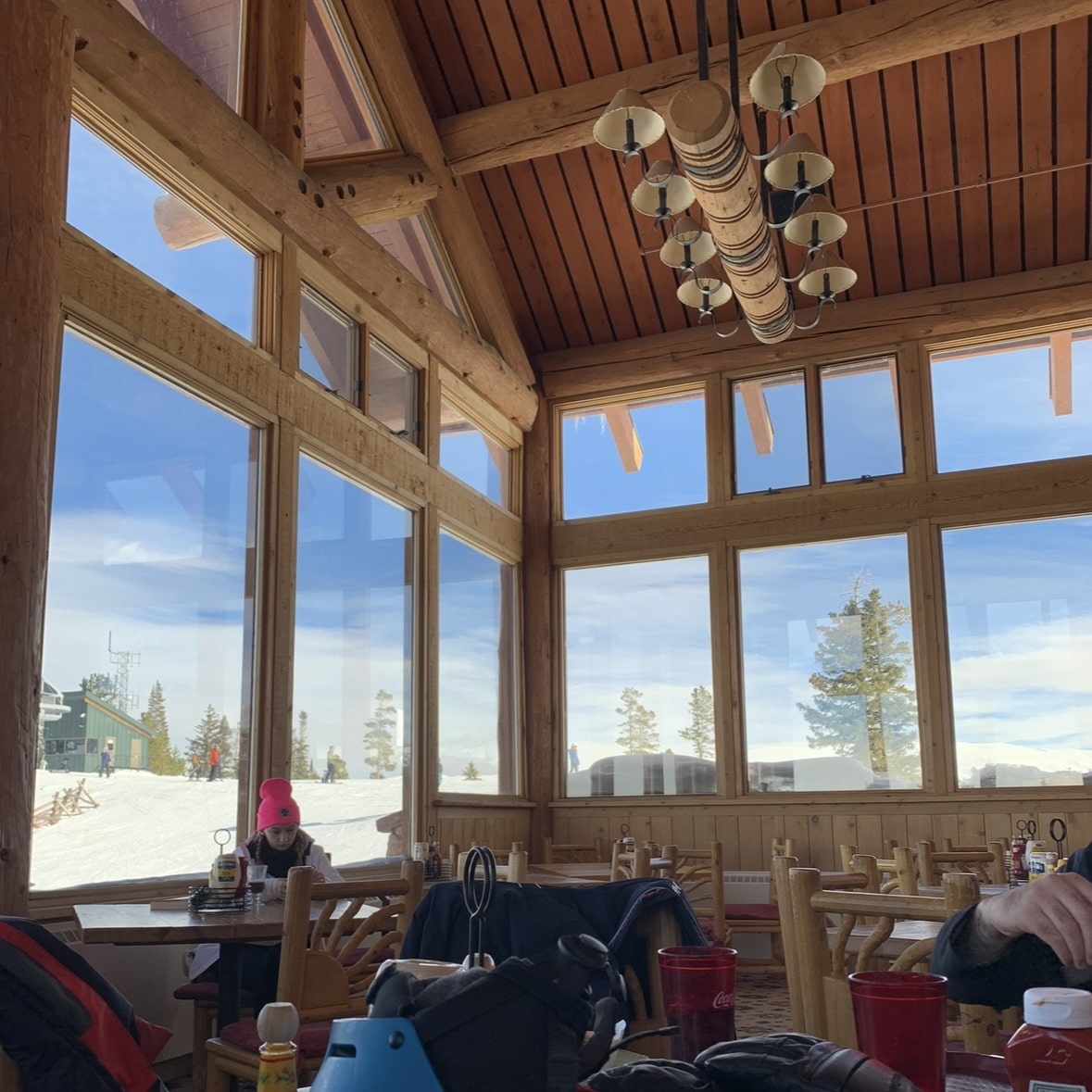
Character
The East Coast mountains are resilient, offering something even in the lowest of snow years. There is a special sense of community between the locals and the weekend-goers, rather than the many tourists that flock to the luxurious, big mountains on the West Coast. The mountains are by no means luxurious; they are brutally cold and icy, but this makes the best skier. If you can ski the East, you can ski anywhere. They are not the biggest of mountains, but if you look in the right corner or find the right line, it can feel as if you’re skiing out West. As for the West Coast, they are the big mountains, full of steep skiing, and quite luxurious. There is big snow, but not the same sense of love for the sport as East Coast skiers. The West offers some of the steepest skiing out there, with various bowls, chutes, and cliffs not found on the East Coast.
All in all, I hope this article has been able to show both sides of skiing in America, specifically the East versus the West Coast. Everyone is entitled to their own opinion on which is better, but I hope this article provided insight into different aspects of the mountains, including terrain, lifts, snow quality and quantity, size, nightlife, and lodges. Although these may be seemingly minimal parts of the sport of skiing itself, these factors are important in deciding where you want your next ski vacation to be. Whether it be the rustic and charming East Coast or the bustling and luxurious West Coast, there is a mountain for everyone.

